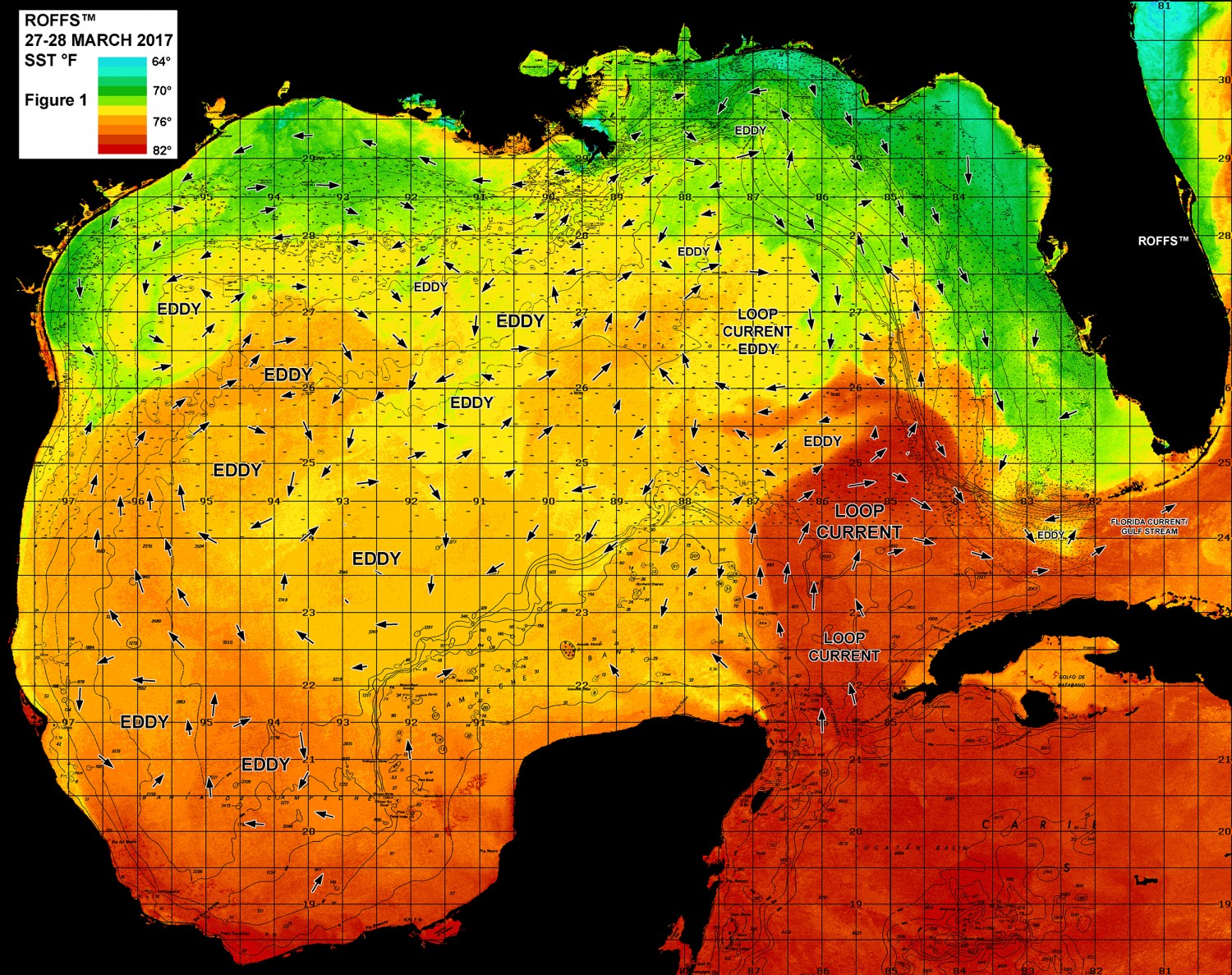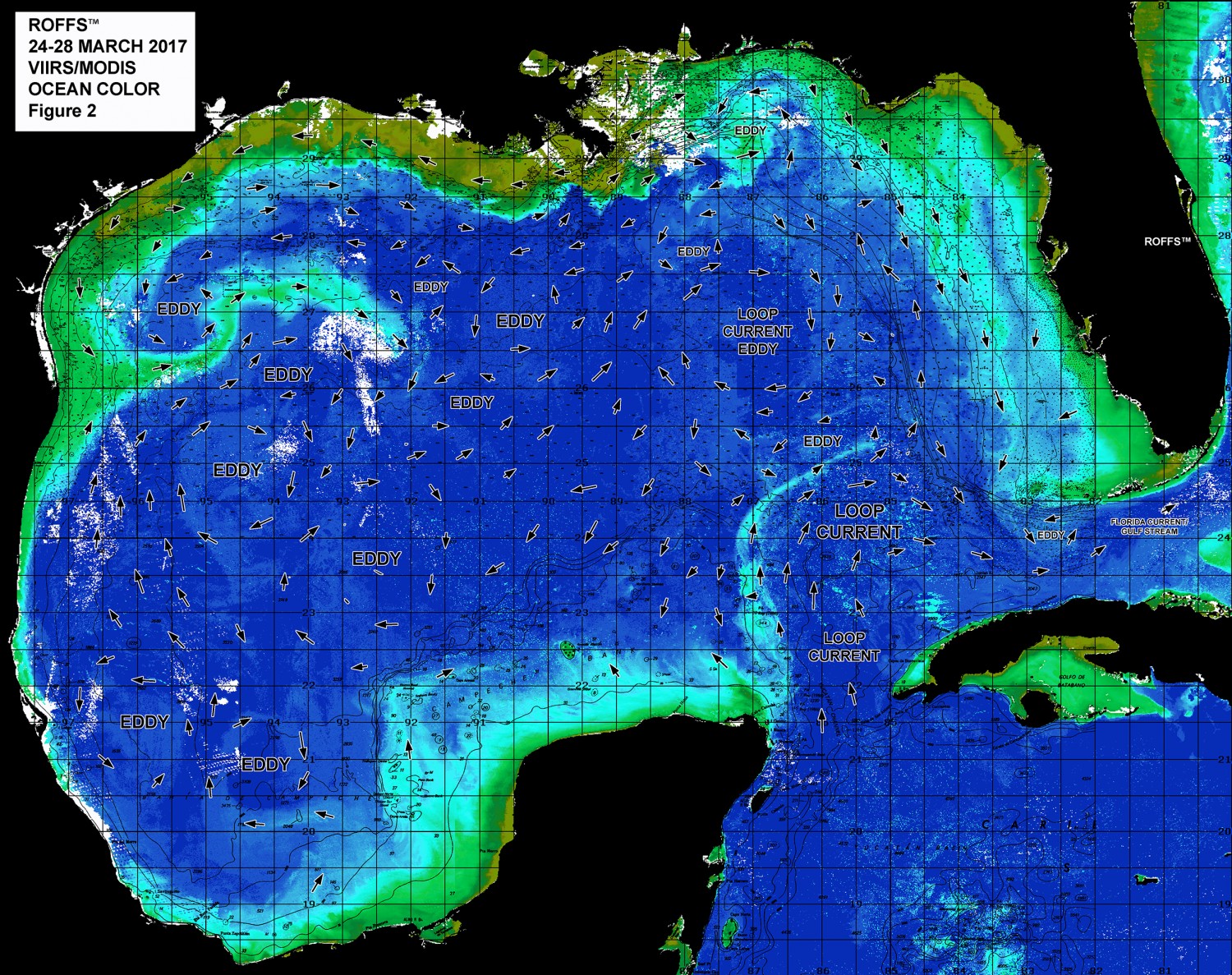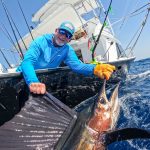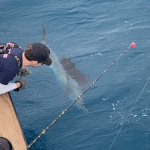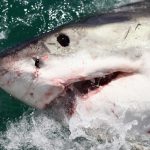By Matthew A. Upton, Greg Gawlikowski and Mitchell A. Roffer
Please click HERE to download this entire forecast/preview as a PDF.
Introduction
We are providing an early spring analysis of the oceanographic conditions for the Gulf of Mexico region using a combination of satellite data including sea surface temperature (SST) and ocean color/chlorophyll images from late March 2017. We will discuss the overall ocean conditions for the current spring fishing season and how they may transition into the summer conditions.
Roffer’s Ocean Fishing Forecasting Service, Inc. – ROFFS™ (roffs.com) has a 30+ year history of monitoring the ocean conditions throughout the Gulf of Mexico for research and fishing applications. Infrared (IR) satellite data is used to observe the SST and ocean color data is used to derive indices of phytoplankton (chlorophyll), water clarity, and colorized dissolved organic material (CDOM). Combined with other oceanographic data and in sequence, these data allows one to visualize the dynamic ocean currents. The satellite data is derived from a variety of sources including NASA, NOAA, Suomi National Polar-orbiting Partnership (SNPP), and the European Space Agency (ESA). ROFFS™ also uses a plethora of different data derived from drifting buoys, gliders, aircraft, fishing vessels, and satellite altimeters. The altimeter data provides a relatively coarse spatial (~15 mile) and temporal resolution (5-10 days) that limits the data’s usage for studying large-scale circulation. It is not useful for evaluating smaller scale and short-term (daily and sub-daily) changes in the ocean currents or their water mass boundaries that control the location of forage fish and the larger, more valuable predator fish.
Background and Some Observations for 2017
It is important to look at the year-to-year trends and anomalies to get a better understanding of how the ocean conditions compare regarding the conditions and location of the fishes preferred habitat and the likelihood of a productive fishing year. Comparing the similar locations and features to last year, the SST of the core of the Loop Current for late-March 2016 was 79.5°F – 80.0°F and for this year over the same time period, it was 81.0°F, which is 1.0°F – 1.5°F higher. This warmer-than-last year trend continues throughout the Gulf of Mexico region. It is important to note that the SST in the offshore northwestern Gulf of Mexico is 73.5°F – 74.5°F, which is 3.0°F – 4.0°F higher than last year at this time. Similarly, the SST in the offshore southwestern Gulf of Mexico area was observed to be in the 76.0°F – 77.0°F range this year, which is 2.0°F – 3.0°F higher than last year. Also, in the mid-Gulf area the SST was observed in the 74.0°F – 75.0°F range and approximately 3.0°F – 4.0°F higher what we observed in 2016.
Also of note is that the coastal SST’s along the west coast of Florida to the western Gulf of Mexico range 4.0°F – 5.0°F higher than they were during the same time period (late-March) last year. These substantially warmer SST’s suggest a much earlier arrival time of the species that you usually target in May (e.g. yellowfin tuna, wahoo, dolphin, kingfish, sailfish, marlin, swordfish, cobia, etc.). Recent reports indicate that the cobia have already arrived just offshore of the Florida panhandle and kingfish fishing action started in the middle of March off of Tampa. In addition, there have already been some reports of marlin, wahoo and good yellowfin tuna action south of Louisiana and in the northeastern Gulf of Mexico. When the satellite tag data are reviewed for the winter of 2016-2017, it will be of particular interest to see if the yellowfin tuna moved to their usual overwintering area in the southwest Gulf of Mexico, or remained in the central Gulf.
Due to the various joint NASA – NOAA research projects that we have been involved in for the past 10 years we have learned more about the importance of the connectivity between the Gulf of Mexico and North Atlantic Ocean system. Thus, as we considered in our Bahamas seasonal forecast, we are paying more attention to the large scale circulation such as the Atlantic Multidecadal Oscillation (AMO). The AMO has been identified by some as a coherent mode of natural variability occurring in the North Atlantic Ocean with an estimated period of 60-80 years. It is based upon the average anomalies of sea surface temperatures (SST) in the North Atlantic basin, typically over 0°- 80°N latitude. (https://climatedataguide.ucar.edu/climate-data/atlantic-multi-decadal-oscillation-amo).
The unsmoothed AMO Index for January and February 2015 was -0.001 and 0.004 respectively. In 2016 the January and February values were 0.238 and 0.163 and in 2017 they were 0.233 and 0.234 respectively. We have learned from our colleagues at NOAA that a positive trend in these AMO indices suggest that a slowdown of the North Atlantic Ocean Circulation is occurring. This includes a slowing of the Gulf Stream system including the Loop Current. This could explain why the Loop Current has not extended as far north this year compared with other years during March. Whether the velocity this year is significantly different from the past remains to be seen. We have learned that the currents are highly variable from year-to-year and season-to-season so we will continue to monitor these conditions to see if we this trend continues.
Note also, a positive AMO is usually associated with an increase in the number of tropical storms that mature into hurricanes because the overall North Atlantic Ocean and Gulf of Mexico SST is higher (i.e., higher anomalies). This does not take into account the wind shear variability and other aspects of tropical storm genesis. For easy to understand answers to frequently asked questions about the AMO see http://www.aoml.noaa.gov/phod/amo_faq.php#faq_2.
Regarding El Niño – Southern Oscillation, presently we are entering a transition period from a La Niña to more neutral (normal) conditions during the next few months. Generally, this means a shift from dryer and slightly warmer atmospheric conditions to more “normal” conditions within the Gulf of Mexico region. We will continue to investigate the relationship between these larger oceanographic oscillations and relationships to the oceanographic conditions and fishing in the Gulf of Mexico waters. We have included this information to spark your interest in climate indices.
For forecasting short-term oceanographic conditions related to finding fish, ROFFS™ uses real-time direct observations rather than unproven ocean models and longer-term composites. We have learned that evaluating the preseason conditions along with regional climate models provides insight into future seasonal trends for fishing. Experience and understanding the ocean – atmospheric dynamics is our guide as we have had moderate success in forecasting seasonal trends of fishing productivity based on the stepwise progression in the location of the fishes’ preferred habitat based on temperature and water color.
Nowcast Analysis
The circulation of the Gulf of Mexico is controlled by the location and flow of the Loop Current, large mesoscale eddies, local and regional winds, and the dynamic thermohaline forces of the fresh water runoff mixing with the ocean water. The Loop Current is a warmer ocean current that flows northward between Cuba and the Yucatan Peninsula into the Gulf of Mexico. It makes a “loop” eastward within the Gulf then southward before exiting through the Straits of Florida and re-joining the Gulf Stream. It is the dominant circulation feature in the eastern Gulf of Mexico and its location varies on a monthly and annual time scales. The Loop Current can be a highway for pelagic fish moving into the Gulf of Mexico from the Caribbean Sea. The eddies that the Loop Current sheds can be an important fish habitat for longer periods of time as they progress from the eastern Gulf of Mexico to the western Gulf of Mexico over several months.
Figure 1 was derived from a variety of U.S. (NASA, NOAA, JPSS and ESA) satellites during the late-March (March 27-28, 2017) period and Figure 2 was derived from the U.S. SNPP VIIRS, Aqua MODIS and Terra MODIS ocean color/chlorophyll imagery during this same period (March 24-28, 2017). As the exact values of the original data from different satellite sensors (VIIRS and MODIS) are not the same, we cross-calibrated the data to derive images that had realistic and consistent water color. This is one of the many techniques that we derived during the valuable NASA Earth Science Program projects that ROFFS™ has been involved with.
We could not use single and same day imagery for the SST and ocean color data due to cloud cover interference, so we used a combination of imagery and the time-tested ROFFS™ cloud reduction techniques to produce these relatively cloud-free images. However, for comparison purposes we consider these images as an equal image pair for the purposes of this discussion. The directional flow, not speed of the water was derived from our ROFFS™ sequential image analysis, following the water image to image based on the water masses distinct, i.e. signature value. An example of this years SST satellite infrared imagery in greytone can be found on the ROFFS™ YouTube™ site (https://www.youtube.com/watch?v=72z-BK-5bpg). Viewing the movie will allow one to follow the flow of the water within the Gulf of Mexico region during the last two months, where the darker greytoned water represents the warmer water and white indicates clouds.
When evaluating this year’s late-March oceanographic conditions it became apparent that there is already a substantial amount of preferred habitat (e.g. blue water with 70°F-75°F) in many of the popular fishing areas around the Gulf of Mexico. This suggests that good fishing conditions already exist over the “Double Nipple” to Mississippi Canyon to Green Canyon area and over many other areas in the northeast Gulf of Mexico. Also, there is also plenty of warmer bluer (70°F-75°F) water in the northwestern Gulf of Mexico near the East Breaks, over the 300-400-500 fathom ledges and even as far inshore as 40-50 fathom depths east of East Breaks to the Flower Gardens area.
Offshore of the west Florida coast, there is also large amounts of bluer water (70°F-74°F) and mixed Loop Current related water (76°F-77°F). Note that this water is as far inshore as the 50-100 fathom depths in some areas and offshore towards the Steps region. Of particular significance to the Alabama and Mississippi fishing community is the counter-clockwise rotating eddy that is centered near De Soto Canyon (87°10’W & 29°30’N) that is pulling up warmer blue water inshore over the “Nipple” and “Steps” areas. These are favorable conditions for good early season fishing action relatively close to shore for dolphin, tuna, wahoo, sailfish, kingfish, cobia and even early season marlin.
Figure 1: This year’s Gulf of Mexico conditions were derived from a variety of infrared sensors to get SST from NASA, NOAA, and JPSS satellites during March 27-28, 2017. Main features and surface currents are labeled.
Figure 2: This years Gulf of Mexico conditions derived from the ocean color/chlorophyll imagery during March 24-28, 2017 from the VIIRS sensors on SNPP satellite in combination with the Aqua and Terra sensors on the MODIS satellite. We consider this an image pair with the above SST Figure1 image. Same main features and surface currents labeled (white = clouds).
It is important to consider that the location and intrusion of the main Loop Current water for this time of year is not as far north and located farther east than last year at this time. Overall, the location of the north/northwestern edge of the main body of the Loop Current is located further south this year compared with the conditions that we have observed over the past several years. If this southern location does not change, then it would suggest that the fish traveling in the Loop Current would remain in the southeastern Gulf of Mexico. However, this is only part of the story as recent fish tagging research (personal communication, Brett Falterman, Louisiana Department of Wildlife and Fisheries) indicate that another group of migratory yellowfin tuna overwinter in the southwestern Gulf of Mexico and return northeastward in the spring and summer. As mentioned before, it is possible that due to the relatively mild winter that these fish never left the central Gulf.
The good news for the northern central Gulf of Mexico is that there is a relatively large Loop Current eddy centered near 87°00’W & 27°00’N that is already pulling the more favorable mixed Loop Current water toward Louisiana, Mississippi and Alabama coasts. These conditions could account for the recent early season catches of bigger yellowfin tuna, dolphin, wahoo, and blue marlin in the northeastern Gulf. We expect that this eddy will continue to bring the water and fish closer to the Mississippi Canyon and Green Canyon during the months of April and May. Furthermore, if you look at the YouTube™ movie loop referenced above, we notice signs that the Loop Current appears to be progressing slowly northward, which is likely to improve the fishing conditions in the eastern Gulf of Mexico into the spring and early summer.
Conclusion
Based on what we have been observing over the last several weeks, the present ocean conditions for the Gulf of Mexico region are much warmer than the past few years and already favorable for fishing action. This implies that the early fishing season for both the coastal and offshore areas will continue. Overall, we think that the Gulf of Mexico conditions for spring to early summer are GOOD to EXCELLENT so it is already time to start fishing. We only hope that the water does not get too warm, too soon and push the fish deeper into the water column or force them to exit the Gulf of Mexico.
It is important to note that good fishing action on a daily basis is strongly linked to local, short-term (days) current conditions that concentrate the fish once the preferred habitats of the fish are in a particular region. When the water mass boundaries associated with these currents are geographically stable and favorable, i.e., persistently pushing over “good” bottom topography and/or in a favorable inshore direction, then they concentrate the baitfish and larger fish can be found foraging. This indicates that the fishing action on any given day is controlled by relatively short term (hourly to daily) and relatively small scale (1-5 mile) movements of the currents and their water mass boundaries. Our experience indicates that to reliably forecast specific concentrations of fish on a daily basis one must evaluate the ocean conditions on these scales. Relatively small subtle changes in the currents and their associated water mass boundary zones often have dramatic effects on the distribution and concentration of fish.
Contact ROFFS™ (800.677.7633 / fish7@roffs.com / roffs.com) for the daily real-time detailed fishing forecasting analyses and get the inside track to where the better conditions will be tomorrow. We continue to monitor these Gulf of Mexico conditions and how they change from day-to-day as the larger recreational and tournament fishing season approaches. The bottom line is GET READY and GET OFFSHORE NOW, for the early season GOOD fishing conditions have already started and should continue through April into May and June.
Safe and Successful Fishing

